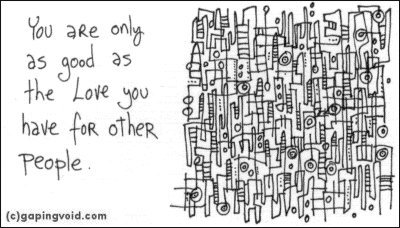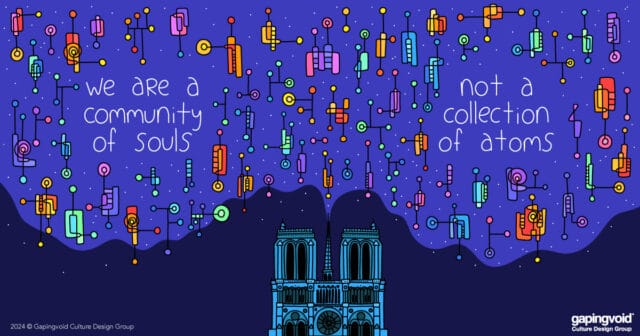
Three thoughts on “Customer Engagement”.
1. As somebody in the wine business, I find it odd that the industry, which has been bringing people together for thousands of years, is actually rather bad at “Customer Engagement”. A lot of winemakers don’t want a conversation with you, they just want to tell everybody how great they are. They just want to slap a picture of their chateau on the label and tell you how classy their family is. Boring, boring, boring….
2. It’s not about how much your product engages with the customer. It’s about how much your product allows your customer to engage with other people. As Kathy Sierra says in her brilliant post, “Success no longer has to be a meritocracy (or advertocracy), today it’s just as much a loveocracy.”
3. I find “Customer Engagement” much easier if I start thinking of the product [in my case, a bottle of wine] not as a “thing”, but as a “Social Object”.
[Semi-Related Link] Johnnie Moore talks about the “300” movie event we went to the other night:
I think if I’d not seen it in these circumstances, I might have been a bit more snarky about it… and I think that’s interesting. These bloggy initiatives rip down some of the barriers between creator and audience; because the director was there, I thought more about the work that he’d gone through in making it, saw his passion for the work, enjoyed his quirky anecdotes about the challenge of getting it made. I made connections. In my eensy-weensy way I felt part of something. I like that.
By opening up to the bloggers, Warner Bros help turn their movie into a social object. I guess the question is, how well does social objectification scale?
[Afterthought from Johnnie Moore:]
“Marketing 1.0 treats customers as objects of communication: marketing is done to them. In co-creation, everyone is a subject (in the grammatical sense) — an initiator of action, a creator. Your brand, and your marketing, are the objects everyone gets to play with – if you’re lucky. Miss this point, and you may head the same way as the music industry…”



